With a digital display, heat guard, and control unit, there is a lot to get excited about when it comes to the Hygger digital quartz aquarium heater.
But does it live up to the excitement? And how does it compare to other aquarium heaters?
To find out, I bought the Hygger digital aquarium heater and reviewed it by putting through a series of tests on my own tanks and comparing the results to other heaters in the same category so you can have a definitive answer.
Please note: I purchased the 200W heater because it’s right for my tank size (55 gallon). This heater is still available in different wattage to suit your tank.
Hygger Aquarium Heater Review Overview

I took a close look at the Hygger 200W Digital Quartz Aquarium Heater and put this heater through its paces in one of my home tanks.
I like the super snazzy design of this heater, instead of a single tube style heater, the Hygger has a simple to use digital control unit, separate heating unit and wired temperature probe.
The heating unit has a great heater guard that can help protect fish against deadly burns.
But, I’m not crazy about the installation or some of the safety features on this product.
There is no dry sensor that shuts the heating element off if it’s removed from the water and the overheat sensor doesn’t shut the heater down until the water reaches the excessively high temperature of 97°F (36°C).
I would recommend that you keep an easy to read thermometer on the front of your tank to make it easy to monitor your tank’s temperature. This isn’t unique to this Hygger heater, I think you should do this any time you’re running a heater in your tank.
You can find my top picks for thermometers here.
I think this heater, even at 200 watts, is a bit underpowered. I would recommend using it in tanks that are 40 gallons (151 liters) and under, but not a 55 gallon (208 liter).
That being said, I’ve had good luck with this heater so far. In addition to running tests for this review article. I’ve also been using this heater for months in my 40 gallon tank and have had a good experience.

Last update on 2024-04-24 / Commissions Earned / Images from Amazon Product Advertising API
What’s in the Box?
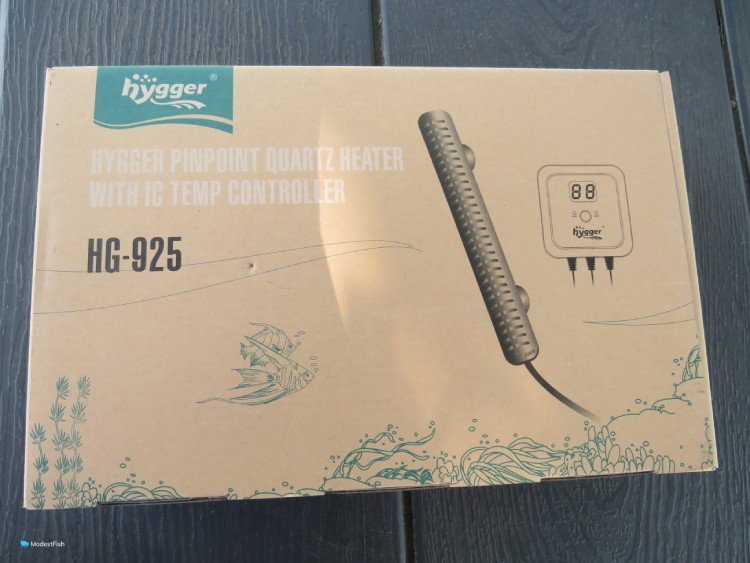
This heater is made up of three main parts:
Control unit – small plastic box with a large digital temperature reading.
- Single button control for setting the temperature.
- Keyhole slot to attach a suction cup to the back of the box for attachment to the outside glass.
- Control unit is not meant to be submerged. Always keep it on the outside of the tank.
Heating unit – glass cylinder encased in a thick plastic heater guard.
- Much smaller than a lot of competing heaters
- Must be used with the control unit or it will just stay on continuously and grossly overheat the tank
- Plugs into the control unit with a three prong plug
Temperature probe – wired directly into control unit
- Attach it with suction cup to the back of the inside tank glass
Suction cups – there are three loose suction cups for attaching the control unit and the heating unit to the tank walls
How I Tested The Hygger 200W Heater
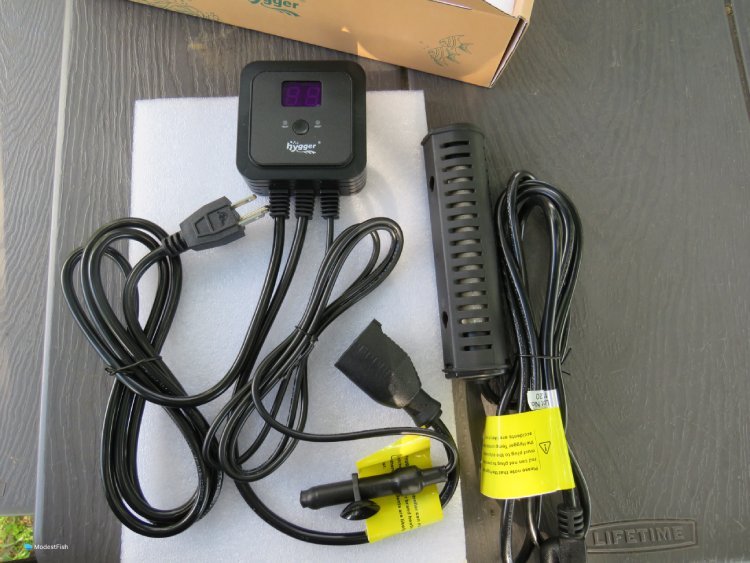
I tested this heater by setting it up in my 55 gallon (208 liter) cichlid tank and letting it run for a week. I also tested four other heaters so I could get a head to head comparison.
I installed multiple digital and liquid thermometers along the length of the front tank glass so I could easily monitor the water temperature throughout the day.
I was particularly interested in three factors:
- Installation – how easy or difficult was it to install the heater and were there workarounds for any problems?
- Calibration – just because you set a thermometer at 75°F (24°C) mark, doesn’t mean the heater will actually warm the water to that temp. You may have to set the heater for the temp you want and then turn it up or down to get it to hold the water at the correct temperature. So, how easy or difficult was it to calibrate this heater?
- Consistency – I was looking at how steady a temp the heater maintained in the tank. Some heaters don’t automatically start heating until there is a 2°F difference up or down. This can lead to unwanted temperature swings in the tank throughout the day.
On top of these three factors, I also took a look at optional features. Here is what I was looking for:
- Easy to read temperature settings – it makes it SO much easier to set and calibrate a heater if there are clear markings that let you know what temperature you’re setting the heater for. Some heaters don’t even have markings that tell you whether you’re turning the heat up or down, they totally suck. Easy to read settings are important
- Durability – the exterior of an aquarium heater can be made of glass, ceramic, plastic or titanium. Glass and ceramic can crack or even shatter. I prefer plastic or titanium over glass or ceramic.
- Indicator light – heaters can have no indicator lights, one just for active heating mode or one for heating mode and another for standby mode. I prefer two lights because then you know that the heater is connected to power and working, even if it’s in standby mode.
- Overheat/dry sensor – overheat sensors will trigger an emergency shutdown if the heater rises above a certain temperature. A dry sensor detects when the heater is running while not in water. Usually, they will shut the heater down if it’s running outside the water and will turn it back on once the heater is submerged again.
- Heater guard – a heater guard is a tough plastic frame on the outside of the heating element that will keep fish from accidentally touching the hot surface. This is a great safety feature that helps prevent what are usually fatal injuries.
Hygger Heater Review And Test Results
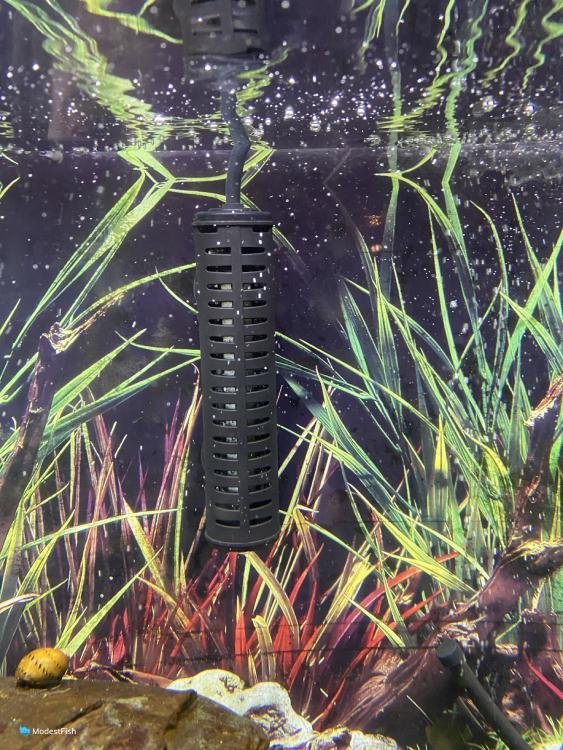
When it came to the important factors I was looking for, this Hygger had some ups and downs:
Installation
Installing this heater was a bit of a pain. You have to suction cup the temperature probe, heating unit and control unit. The probe and heating unit are no problem. But, the suction cup is not strong enough to hold the super heavy control unit to the outside glass, not at all! I’ve used two of these heaters and I had this problem on both.
The control unit will stay stuck to the glass for about a day and then just keeps falling off. As a workaround, I hung the control unit from a thumbtack I stuck in the side of the wooden tank stand. This works really well and you can’t see the thumbtack at all.
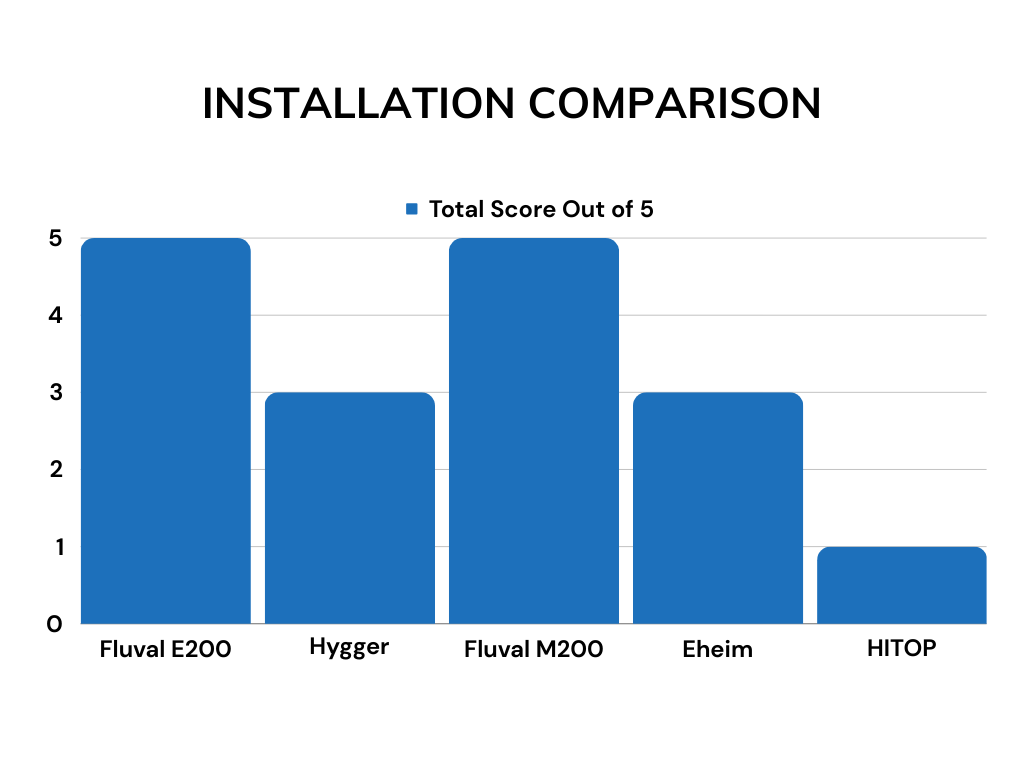
Calibration
I had to turn this heater up twice (I ended up setting it on 77°F) to get it to warm the water to around 75°F. I say around 75°F because I could never get the temp to stay right at 75°F. Since you can only change the temperature setting by whole degrees, not the fine tuning you can do with a heater that has a dial, the tank would either sit at 74°F or 76°F, never at the exact temp I wanted.
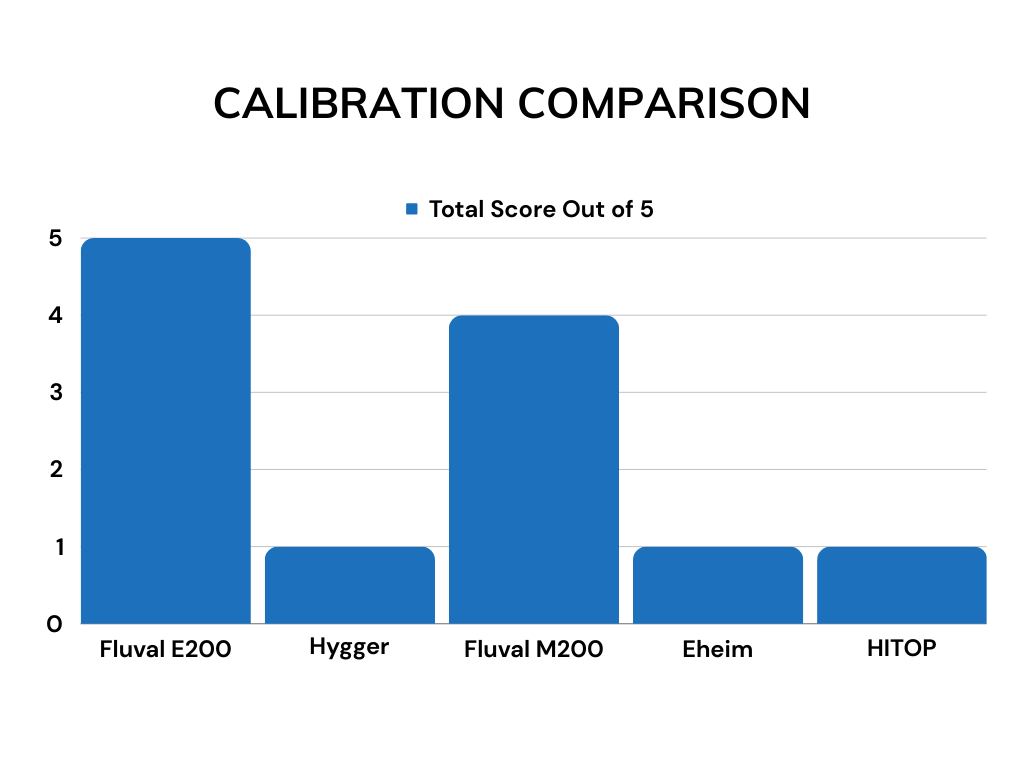
Consistency
This heater struggled to hold a consistent temp throughout the day. The temp would be about a degree higher during the afternoon, which was weird since the air in the room didn’t get warmer and there was no sunlight hitting the tank. The water would then cool off overnight and be at 74°F when I would check it in the morning. So far, none of the other heaters I’ve tested had this issue with consistency.
Here’s how this Hygger measured up when it comes to the key features I looked for:
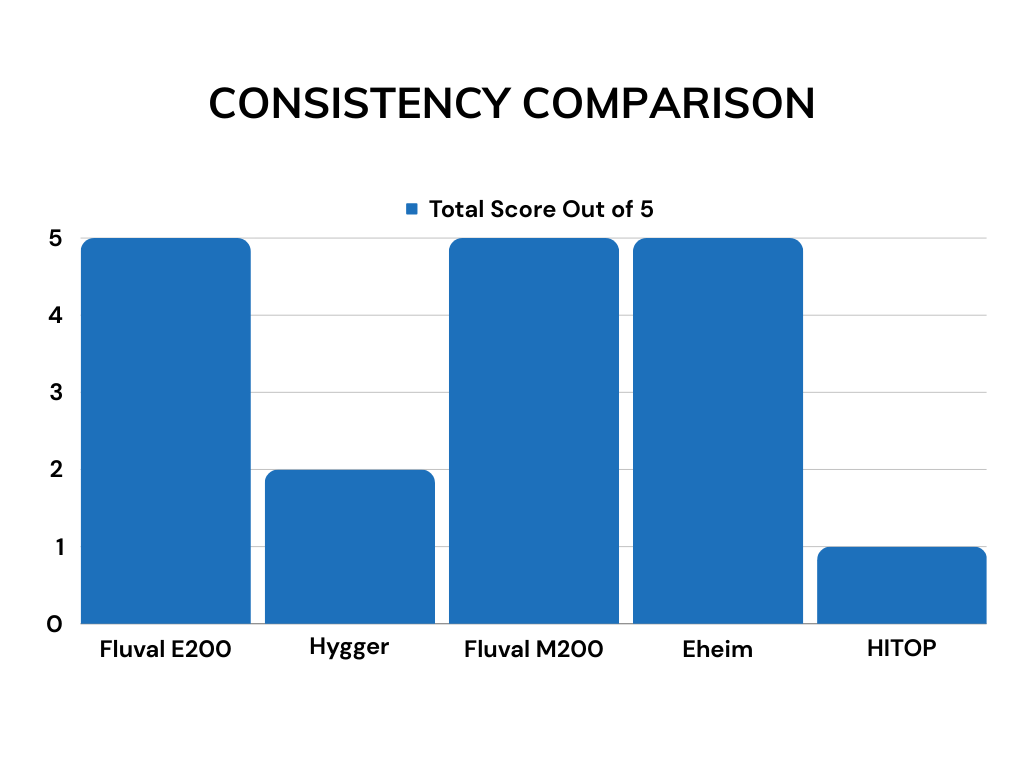
Easy to Read Temperature Settings
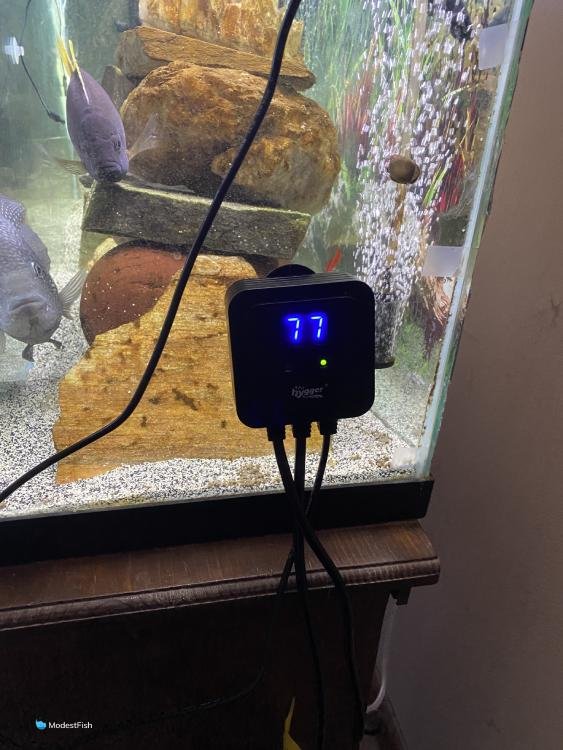
It is really, really easy to set or change the settings on this heater. The control unit has a single button that lets you scroll through settings for 61°F-90°F (16°-32°C). If you go past the number you want, you just keep hitting the button and it will go back to the start after 90°F.
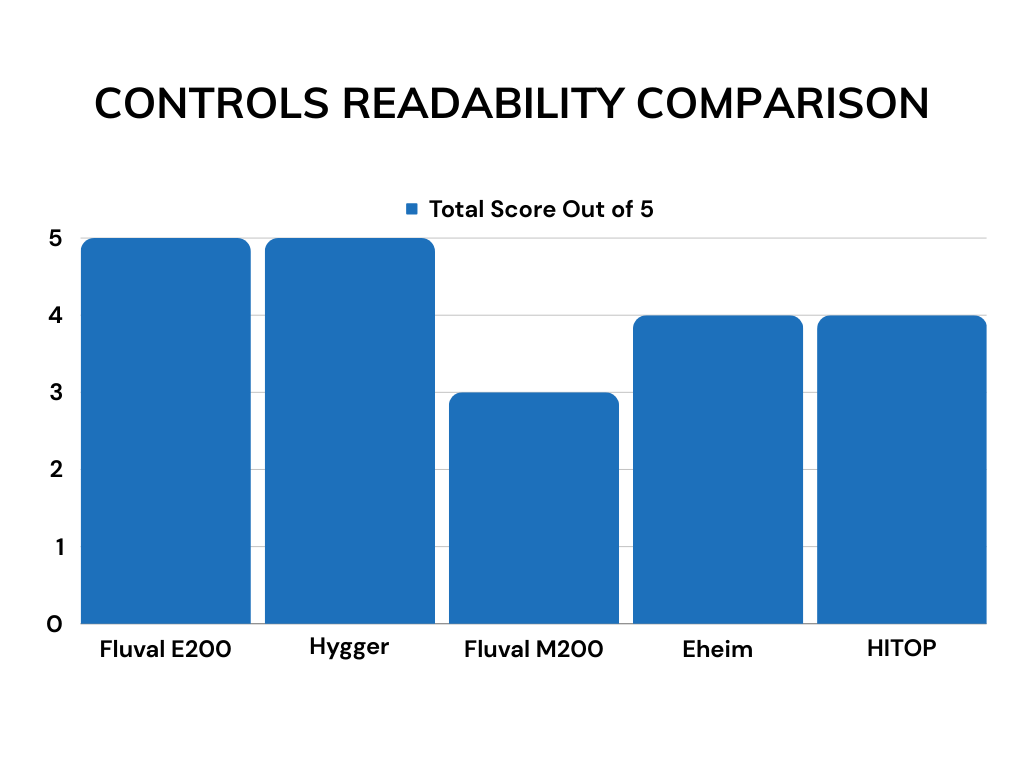
Durability
The heating element is covered with a tough plastic heater guard, but the tube inside is made from glass, making it vulnerable to cracks. I would prefer shatterproof plastic or titanium. But, at least the guard should protect it from accidental bumps.
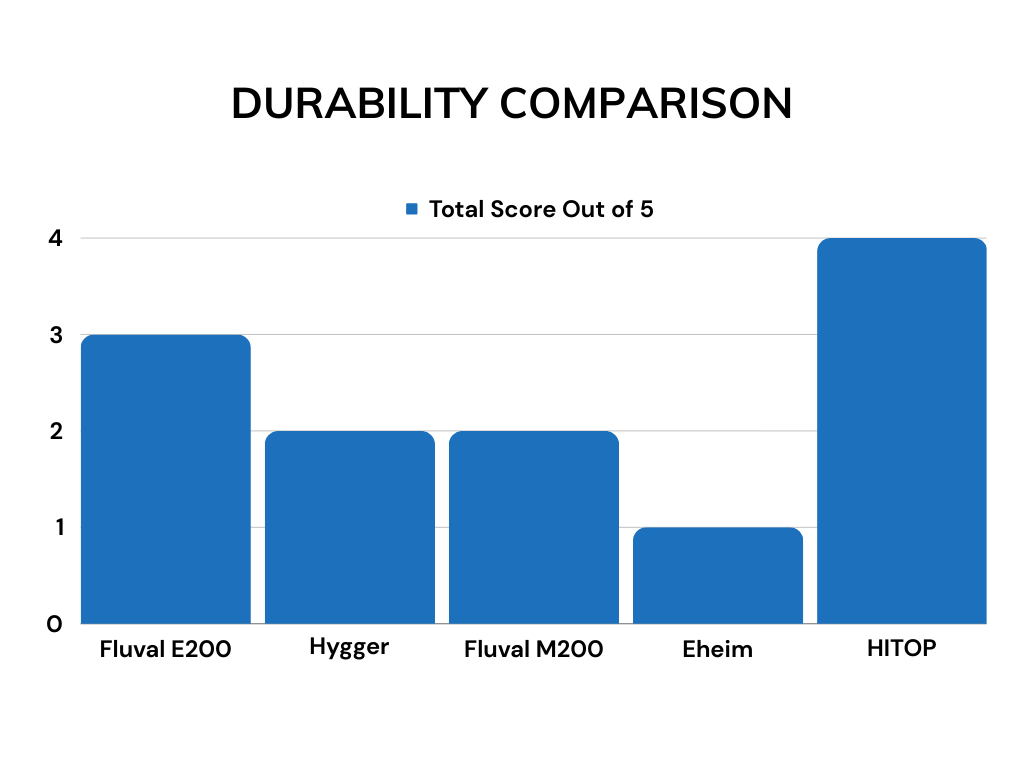
Indicator light
This heater has a green indicator light for standby mode and a red one for active heat mode.
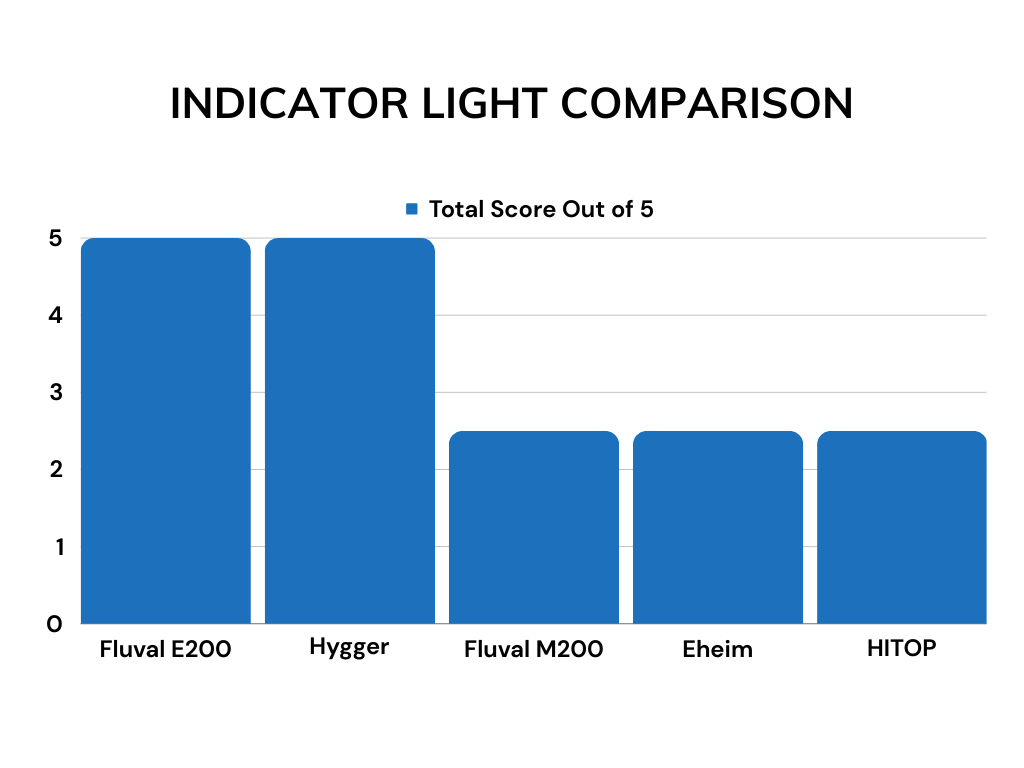
Overheat/Dry Sensor
There is an overheat sensor, but it only initiates shutdown after 97°F (36°C). Any fish in the tank would be long dead before the heater shut itself off. Be advised, this heater DOES NOT have a sensor that will shut it off if it’s removed from the water but still plugged in. It will just keep running and running. There are several accounts online of this heater melting if it’s allowed to run out of the water.
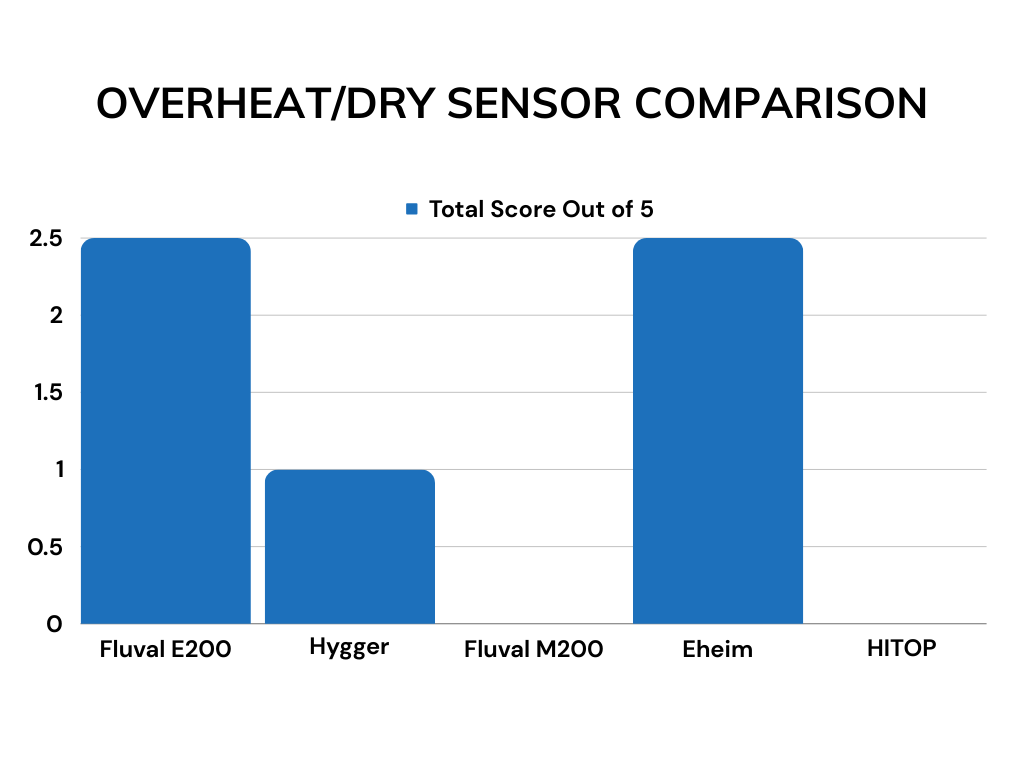
Heater guard
The heating unit is covered by a thick plastic heater guard that will keep fish from touching it and getting burned. I recently lost a school of dwarf rainbow fish because they were darting between the heater and the tank glass. All it took was a split second of contact to give them burns bad enough to kill them. So, the built in heater guard is a major bonus!
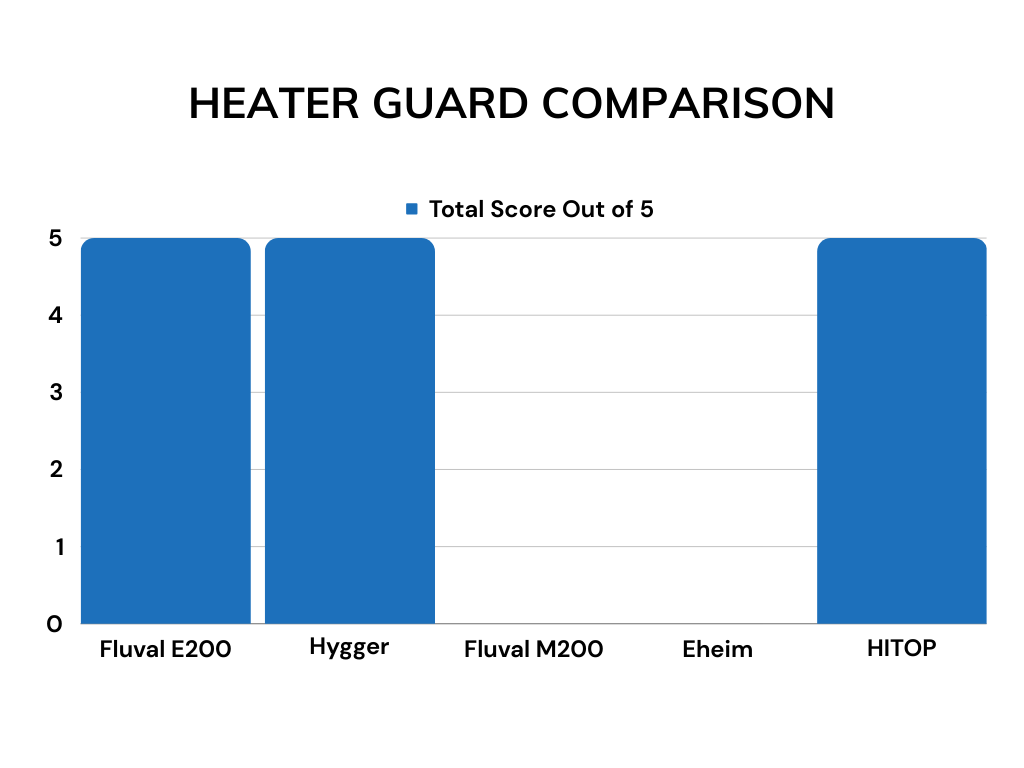
Pros & Cons of the Hygger 200W Digital Quartz Heater

Last update on 2024-04-24 / Commissions Earned / Images from Amazon Product Advertising API
At this point, I’ve had experience with two of these heaters. One has been running in my 40 gallon (151 liter) angelfish tank for several months and the other was purchased recently for a head to head competition between this model and four other kinds of heaters.
For testing purposes, I put this heater into one of my 55 gallon (208 liter) tanks so that I could monitor how consistent the temp was and how much I had to mess with the heater to calibrate it to the right temp.
It can take a few days to calibrate a heater to the temperature you want. You might set a heater for 75°F, but the actual temperature of the water ends up being higher or lower. Then you have to turn the heater up or down until you finally get the temp you want. Give the heater at least 5 hours to change the water temperature before you make further adjustments and monitor temperature changes regularly.
The 55 gallon tank is housed in a climate controlled room that has an average temperature of 70°F (21°C). My goal with all the heater tests was for the water to be held at 75°F (24°C).
It’s very easy to set the temp on this heater, just push the button until it reaches your desired temperature. If you go past it, just keep pressing the button, after 90°F, the number will go back to 60°F and you can then get it back to the temp you want.
I love that you don’t even have to get wet to change the temperature setting! And it’s very easy to set and you don’t have to guess whether or not you increased the temp by squinting at a tiny dial on top of the heater.
Always a bonus for my 40+ year old eyes!
The control unit has two indicator lights: green for standby and red for active heating.
This heater does not have a sensor that turns it off when it’s out of the water. I’ve seen several reports of this heater melting if it’s allowed to run out of the water.
So, make sure to unplug it and let it cool before you take it out of the water!
It does have an overheat sensor, but the cutoff temp is 97°F (36°F). Your fish would be dead and lightly poached at that temperature, even just overnight.
The control unit has a wire that the heating unit plugs into. This is nice because, if you ever need to, you can buy a heating unit replacement without having to buy everything else along with it.
NEVER run the heating unit without the control unit. The control unit monitors the temperature and turns the heating unit on and off. If you bypassed the control unit, and plugged the heating unit into an outlet directly, it would stay on continuously. With nothing to stop the heating unit, it will keep heating the water, leading to lethal temperatures in your tank. Always use the control unit!
I did like that the heating unit doesn’t take up a whole lot of space in the tank. Other heaters I’ve tried out have easily taken up three times as much room.
What I really didn’t like was trying to mount the control unit. The suction cups are great for the heating unit. They keep it in place just fine.
But, for the control unit, they are NOT strong enough. I got them to stick at first, but after about 24 hours, the suction cup gave out which caused the control unit to keep falling to the floor.
This happened with both of these heaters. My solution was to stick thumbtacks into the sides of the wooden tank stands and hook the control units on these. Not the most elegant solution, but luckily, you can’t see the thumbtacks at all.
I had a hell of a time trying to calibrate this heater on my 55 gallon. It seems like this heater, despite being 200 watts, really struggled to maintain the temperature in that tank (it’s done just fine in the 40 gallon).
This tank has A LOT of water flow. There’s a hang-on-the-back filter, a 300 GPH powerhead and two air pumps running three airstones of various sizes. So, it’s not just that there was no way for the heated water to flow around the tank.
Also, other 200 watt heaters have been able to maintain the desired temperature installed in the same location in this tank with no problem.
I had to mess with it twice, eventually I set the temp on the control unit until it said 77°F on the digital display.
But, I never could get it right at 75°F. You can only change the temp in whole degrees on the control unit, no fine tuning. So the temperature was either somewhere around 74°F or over 76°F.
And the temp did fluctuate throughout the day. I think this is because the control unit doesn’t turn the heating unit on/off until it detects about a 2°F difference.
I think this heater might be a little underpowered for a 55 gallon, maybe because there isn’t a huge amount of surface area on the heating unit. Sometimes, space saving comes at a cost. But again, it’s done great in my 40 gallon.
I think that extra 15 gallons is just a bit much for this model.
Pros:
- Easy to read temp controls
- Built in heater guard
- Heating element can be replaced if needed
- Space saving
- Change settings without getting wet
Cons:
- Difficult to calibrate to right temp
- Maintained a somewhat inconsistent temp
- No dry sensor
- Overheat sensor doesn’t turn off until water reaches 97°F

Last update on 2024-04-24 / Commissions Earned / Images from Amazon Product Advertising API
How The Hygger Compares To Other Aquarium Heaters
This review is part of a larger series of head to head tests that I’ve run on five different heaters:
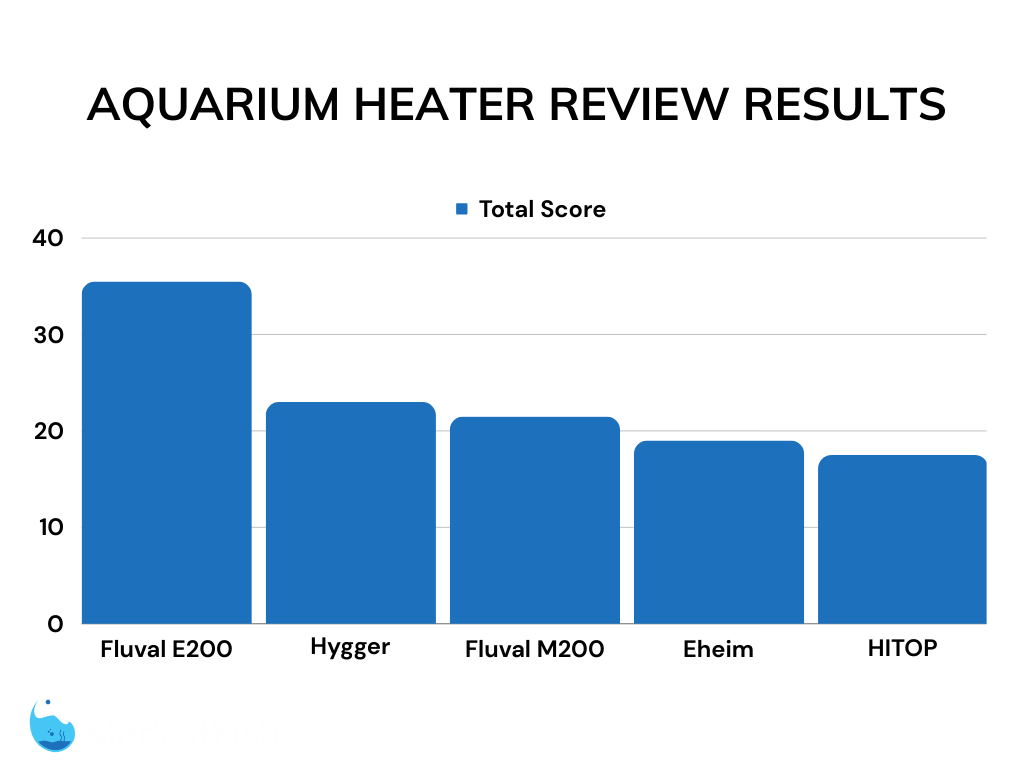
- Fluval E200 Electronic Heater
- Hygger 200W Digital Quartz Aquarium Heater
- Fluval M200 Submersible Heater
- Eheim Jager Aquarium Thermostat Heater
- HITOP Adjustable PTC Aquarium Heater
I can say that this heater was the hardest to install out of all five, especially when it comes to mounting the control unit.
But, this heater takes up a lot less room in the tank than any of the other four.
I did have to fiddle with getting it calibrated, especially compared to a set-it-and-forget it heater like the Fluval E200. But, it was much easier to calibrate than the Eheim or HITOP.
I do appreciate the heater guard, something the Fluval M200 and the Eheim filter did not have.
So, my absolute top choice ended up being the Fluval E200, but this Hygger is a good alternative.


Last update on 2024-04-24 / Commissions Earned / Images from Amazon Product Advertising API
You can read the full round up review article compared 5 of the best aquarium heaters here.
Final Verdict On The Hygger Heater
I like a lot of the features of this heater, especially the heater guard and easy to use control unit.
I was not thrilled with getting this heater installed. The suction cups just aren’t strong enough for the control unit on the outside of the tank. Using a thumbtack is an easy workaround, but I think they should improve the suction cup for the control unit.
I also wish that the overheat sensor would cut off the heating element at a much lower temperature, like 85°F at the max. I also don’t like the absence of a dry sensor in case the heater is still plugged in when it’s removed from the tank.
But, these are the same risks that you take with many of the heaters in the aquarium trade. Just like with any heater, monitor your tank’s temperature daily. I usually glance at mine when I feed the fish to double check that everything is OK.
I do think this model is a little underpowered as it struggled to maintain a constant temp in my 55 gallon. So, I’d recommend going with the 300 watt version for any tank over 50 gallons (190 liters).
But, it’s been great in my 40 gallon (151 liter) tank.
So, I’d recommend the 200 watt model for a 30-40 gallon tank.
I hope you find this article helpful.
I wish you and your fish the very best!

Last update on 2024-04-24 / Commissions Earned / Images from Amazon Product Advertising API
